LED light therapy is a non-invasive treatment that has gained popularity in recent years due to its numerous potential benefits. It involves the use of light-emitting diodes (LEDs) to deliver specific wavelengths of light to the skin, promoting healing and rejuvenation. The therapy has been used to treat a variety of conditions, including acne, wrinkles, and pain.
LED light therapy works by stimulating the production of collagen and elastin, which are essential for maintaining healthy skin. The different wavelengths of light used in the therapy penetrate the skin at different depths, targeting specific skin concerns. Blue light, for example, is known to kill acne-causing bacteria, while red light can reduce inflammation and promote healing. The therapy is painless, and there is no downtime, making it a popular choice for those looking for a non-invasive alternative to traditional treatments.
Basics of LED Light Therapy
Definition and Principles
LED Light Therapy, also known as photobiomodulation therapy, is a non-invasive treatment that uses light-emitting diodes (LEDs) to stimulate cellular function in the body. This therapy is based on the principle that certain wavelengths of light can penetrate the skin and be absorbed by cells, triggering a range of biological processes.
The therapy involves exposing the skin to specific wavelengths of light, which can range from red to blue to near-infrared. Each wavelength has its own unique therapeutic benefits, and the choice of wavelength depends on the condition being treated.
History and Evolution
The use of light as a therapeutic tool dates back to ancient civilizations, such as the Greeks and Egyptians, who used sunlight to treat various ailments. However, it wasn’t until the 1960s that the therapeutic potential of LEDs was discovered.
Since then, LED Light Therapy has evolved into a widely used treatment for a range of conditions, including acne, wrinkles, pain, and inflammation. The therapy is non-invasive, painless, and has no reported side effects.
LED Light Therapy is now widely available in spas, clinics, and even at home, with a range of devices available for personal use. The therapy is also being studied for its potential use in treating a range of medical conditions, from chronic pain to depression.
In summary, LED Light Therapy is a non-invasive, safe, and effective treatment that uses specific wavelengths of light to stimulate cellular function in the body. With its long history and growing popularity, it is an exciting area of research and development in the field of alternative medicine.
Types of LED Light Therapy
Red LED Light
Red LED light therapy involves the use of red light wavelengths to penetrate the skin at a depth of up to 10 millimetres. This type of therapy is commonly used to reduce inflammation, stimulate collagen production, and promote healing. It is often used to treat acne, rosacea, and other skin conditions.
Red LED light therapy can be used alone or in combination with other treatments. It is non-invasive and painless, making it a popular choice for those seeking a gentle yet effective treatment option.
Blue LED Light
Blue LED light therapy uses blue light wavelengths to penetrate the skin at a depth of up to 1 millimetre. This type of therapy is commonly used to kill bacteria that cause acne, reduce oil production, and improve the overall appearance of the skin.
Blue LED light therapy is often used in conjunction with other treatments, such as topical medications or chemical peels. It is non-invasive and painless, making it a popular choice for those seeking a gentle yet effective treatment option.
Combination Therapies
Combination therapies involve the use of both red and blue LED light wavelengths to treat a variety of skin conditions. This type of therapy is often used to treat acne, rosacea, and other inflammatory skin conditions.
Combination therapies can be used alone or in conjunction with other treatments, such as topical medications or chemical peels. They are non-invasive and painless, making them a popular choice for those seeking a gentle yet effective treatment option.
Overall, LED light therapy is a safe and effective treatment option for a variety of skin conditions. It is non-invasive, painless, and has minimal side effects. However, it is important to consult with a qualified healthcare professional before beginning any new treatment regimen.
Clinical Applications
LED light therapy has a wide range of clinical applications that have been studied and tested over the years. Here are three of the most common applications:
Skin Rejuvenation
LED light therapy has been shown to improve the appearance of fine lines, wrinkles, and age spots on the skin. This is because the light stimulates the production of collagen and elastin, which are essential for healthy, youthful-looking skin. The therapy also helps to reduce inflammation and redness, which can lead to a more even skin tone.
Acne Treatment
LED light therapy can also be used to treat acne. The blue light targets the bacteria that cause acne, while the red light reduces inflammation and promotes healing. The therapy has been shown to be effective in reducing the number of acne lesions and improving the overall appearance of the skin.
Pain Management
LED light therapy can be used to manage pain in a variety of conditions, including arthritis, fibromyalgia, and back pain. The therapy works by increasing blood flow to the affected area, which can help to reduce inflammation and promote healing. It has also been shown to stimulate the production of endorphins, which are the body’s natural painkillers.
Overall, LED light therapy is a safe and effective treatment option for a variety of conditions. It is non-invasive, painless, and has no known side effects. However, it is important to consult with a healthcare professional before starting any new treatment regimen.


